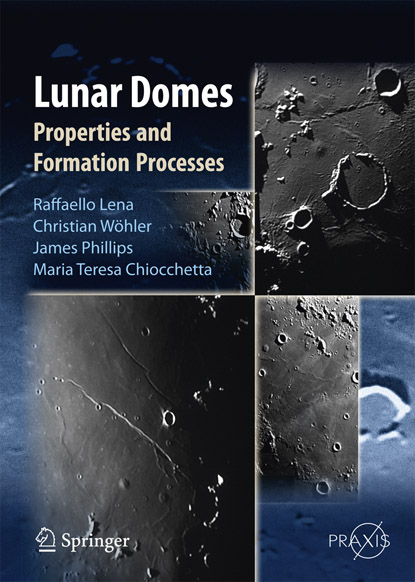Difference between revisions of "April 27, 2013"
(Created page with "__NOTOC__ =Leaving No Dome Unturned= <!-- ws:start:WikiTextHeadingRule:0:<h1> --> </td> <td>Over the last ten years or so a small international group of pro...") |
|||
| (6 intermediate revisions by the same user not shown) | |||
| Line 1: | Line 1: | ||
__NOTOC__ | __NOTOC__ | ||
=Leaving No Dome Unturned= | =Leaving No Dome Unturned= | ||
| − | + | <!-- Start of content --> | |
| − | + | <!-- ws:start:WikiTextHeadingRule:0:<h1> --> | |
| − | + | <table class="wiki_table"> | |
| + | <tr> | ||
| + | <td><!-- ws:start:WikiTextLocalImageRule:14:<img src="/file/view/LPOD-Apr27-13.jpg/426812894/LPOD-Apr27-13.jpg" alt="" title="" /> -->[[File:LPOD-Apr27-13.jpg|LPOD-Apr27-13.jpg]]<!-- ws:end:WikiTextLocalImageRule:14 --><em>image from [http://www.springer.com/astronomy/astrophysics+and+astroparticles/book/978-88-470-2636-0 Springer]</em><br /> | ||
</td> | </td> | ||
| − | + | <td>Over the last ten years or so a small international group of professionals in various fields relentlessly imaged, measured and analysed lunar domes. They started with their own images and traditional techniques, and embraced new data and tools as they became available from orbiting spacecraft to refine their calculations and increase the types of knowledge gained. Early on simply getting an accurate determination of dome height and slope was a significant advance, and now they routinely estimate surface compositions, eruption conditions and geophysical constraints of dome formation. It is not an exaggeration to say that with the publication of the first book devoted exclusively to domes that Raf, Christian, Jim and Maria Teresa have become the world's leading experts on these small volcanoes. The first third of the book is technical, reflecting its origin in papers the team has published in professional journals, The rest is a mare by mare observer's guide to many dozens of domes, each illustrated with spacecraft and amateur images, and derived topographic profiles. The book is not for the casual observer, but both the professional lunar geologist and the advanced amateur will want it as a compact handbook of virtually everything we know of some of the Moon's most illusive features.<br /> | |
<br /> | <br /> | ||
These same four people are the leaders of the [http://digilander.libero.it/glrgroup/consolidatedlunardomecatalogue.htm Geological Lunar Researches Group] that has recently published the 31st issue of [http://digilander.libero.it/glrgroup/ Selenology Today], a high level journal that provides opportunities for amateurs to publish new research on the Moon. Congratulations to GLR for <em>ST</em> and <em>Lunar Domes</em>.<br /> | These same four people are the leaders of the [http://digilander.libero.it/glrgroup/consolidatedlunardomecatalogue.htm Geological Lunar Researches Group] that has recently published the 31st issue of [http://digilander.libero.it/glrgroup/ Selenology Today], a high level journal that provides opportunities for amateurs to publish new research on the Moon. Congratulations to GLR for <em>ST</em> and <em>Lunar Domes</em>.<br /> | ||
| Line 11: | Line 13: | ||
<em>[mailto:tychocrater@yahoo.com Chuck Wood]</em><br /> | <em>[mailto:tychocrater@yahoo.com Chuck Wood]</em><br /> | ||
</td> | </td> | ||
| − | + | </tr> | |
</table> | </table> | ||
| − | |||
<br /> | <br /> | ||
| + | <p><b>Yesterday's LPOD:</b> [[April 26, 2013|Smudge of an Eclipse]] </p> | ||
| + | <p><b>Tomorrow's LPOD:</b> [[April 28, 2013|Still Confused After All These Years]] </p> | ||
<hr /> | <hr /> | ||
| − | + | {{wiki/ArticleFooter}} | |
| − | |||
| − | |||
| − | |||
| − | |||
Latest revision as of 15:34, 8 February 2015
Leaving No Dome Unturned
 image from Springer image from Springer |
Over the last ten years or so a small international group of professionals in various fields relentlessly imaged, measured and analysed lunar domes. They started with their own images and traditional techniques, and embraced new data and tools as they became available from orbiting spacecraft to refine their calculations and increase the types of knowledge gained. Early on simply getting an accurate determination of dome height and slope was a significant advance, and now they routinely estimate surface compositions, eruption conditions and geophysical constraints of dome formation. It is not an exaggeration to say that with the publication of the first book devoted exclusively to domes that Raf, Christian, Jim and Maria Teresa have become the world's leading experts on these small volcanoes. The first third of the book is technical, reflecting its origin in papers the team has published in professional journals, The rest is a mare by mare observer's guide to many dozens of domes, each illustrated with spacecraft and amateur images, and derived topographic profiles. The book is not for the casual observer, but both the professional lunar geologist and the advanced amateur will want it as a compact handbook of virtually everything we know of some of the Moon's most illusive features.
|
Yesterday's LPOD: Smudge of an Eclipse
Tomorrow's LPOD: Still Confused After All These Years
COMMENTS?
Register, Log in, and join in the comments.



